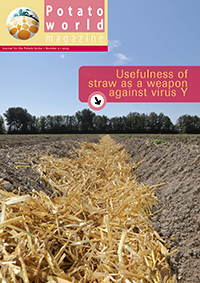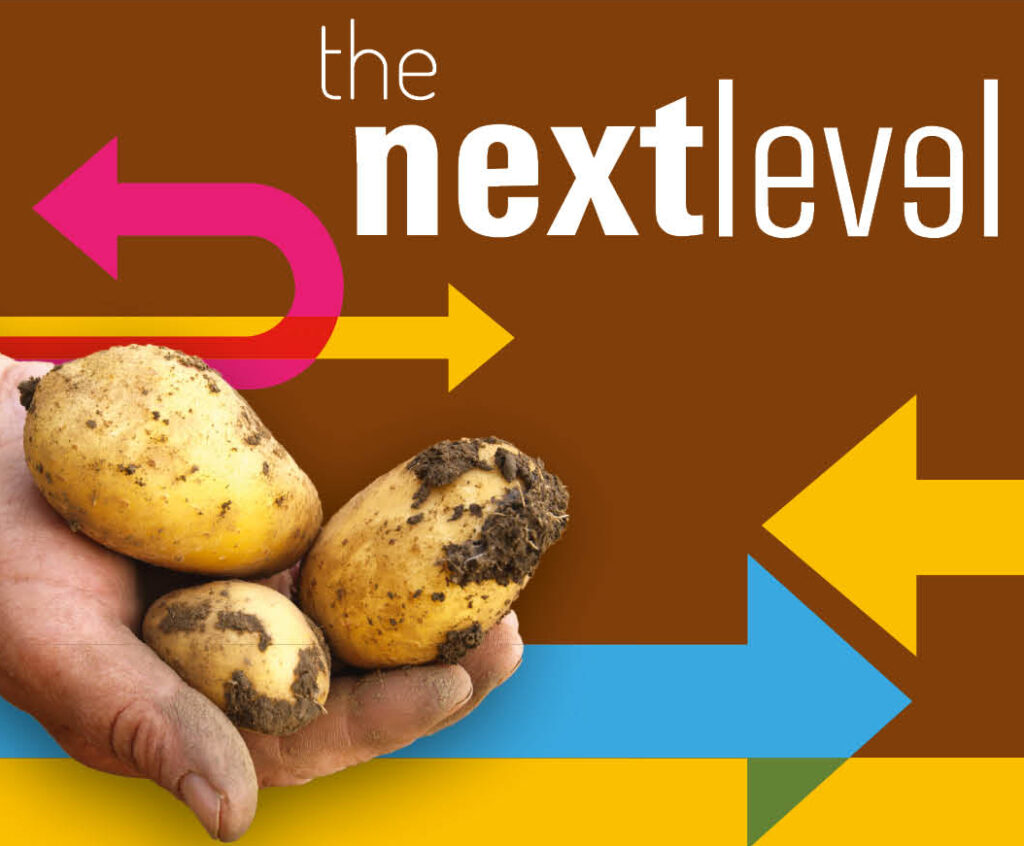Already a subscriber? Activate your premium account

Potatoworld Magazine

In 2013 Potato Europe will be organized at Emmeloord in the center of the Netherlands. It´s theme is The next level. It challenges exhibitors and visitors not to gradually shift from current year to next year´s business but to make giant leaps into the future and then look back at how the major changes took place as to enable them to achieve those changes.
Let us look 40 years ahead to Potato 2050, knowing that changes do not take place linearly but exponentially. Forty years ago we could not imagine how it looks like now so with an increased rate of change forecasting will require even more imagination. In 1973 the carbon dioxide concentration in the air was 330 ppm, now it is 395 and in 2050 it will be close to 600 ppm really picking up speed during the last few decennia. Research in greenhouses and open top chambers mimicking such high CO2 levels has shown that potato more than any other crop benefit enormously with a yield increase of about 35 percent due to CO2 alone, albeit somewhat reduced due to increase ozone levels. Temperatures will be two degrees higher allowing earlier planting and later harvesting adding another 20 percent yield. Where a grower now attains 50 tons, in 2050 it will be 75 t/ha with 30 percent less irrigation need per ton. Potato in 2050 has outperformed most other crops in temperate climates.
Potato production will also be much cheaper in 2050 than now. Sixty years ago Watson and Crick discovered DNA for which they were laureated with a Nobel Prize. Nowadays we live in the era of genomics and are rapidly sequencing all kind of crops and diseases. In 2050 modern – as yet to be discovered – genetic techniques will have made the plant resistant to all known viruses, fungi, pests and bacteria. It has made seed potato schemes elegant and each seed tuber individually diagnosed for vigour, number of eyes, sprouts and emerging stems. There is no more need to spray the crop against blight or aphids. In vitro and mini-tuber production is fully automated and robotized now and is partly taken over by homozygous true seed.

Moore’s law says that computer speed and memory doubles every 18 months. This will allow visual, chemical and physical sensing techniques – aided by nano-technology – to monitor each individual plant and its soil environment. It allows the supply of water and fertilizer according to the needs of each plant through micro irrigation that is the next generation of the current drip system. Tubers are identified individually, their quality (size, dry matter, sugars, taste) is known through rapid throughput chemical and optical sensing techniques. Before storing they are separated in lots with similar quality to facilitate tracing and tracking and processing of lots of consistent quality. Sprouting is inhibited genetically – drastically reducing storage costs – and only for seed production the sprouting ability is activated.
All field operations such as ploughing, planting, fertilization, irrigation and harvesting are fully automated and robotized. Machines are unmanned. Tasks take soil variation into account and all operations are monitored in a control room. Pesticides have become redundant some years ago and water and mineral fertilisers are applied per plant as prescribed by the automated decision system. This means that all resources are used as efficiently as possible making the discussion about sustainability a thing of the past. Like currently food safety, sustainability even well before 20150 is a pre-competitive issue not argued about between companies. The self learning capacity of the automated production system, with every crop cycle improves the optimization and interdependency of the various interventions as the operations and applications.
Trade, transport and logistics are part of the information and sensing continuum from seed, growth and storage and processing. This flow has benefited enormously from cheap and safe energy – from nuclear fusion – and is organized in a modular automated transport. Potatoes of the specific quality go the closest processing plant. Physical ownership of part of the chain – one of the links – is disappearing by 2050. There is ownership of information pertaining to the links (potatoes in he field, store, processing and or packing plant) and the information allows consumer to order and be delivered most specifically. Potato is a most healthy food stuff enhanced with vitamins and nutri-ceuticals and its glycemic properties and digestibility specifically adjusted to the individual consumer’s calorific need.
Anton Haverkort
anton.haverkort@wur.nl
Events
©2015 - 2024 Potatoworld | Webdesign and realisation COMMPRO